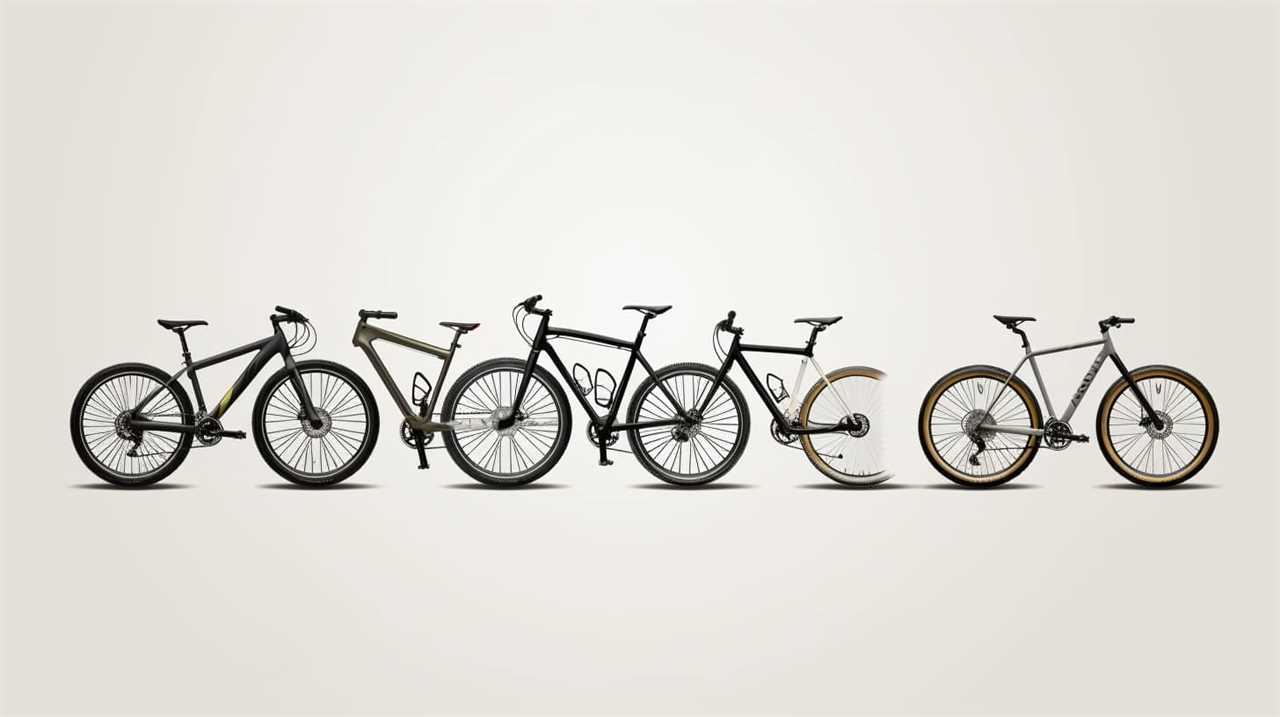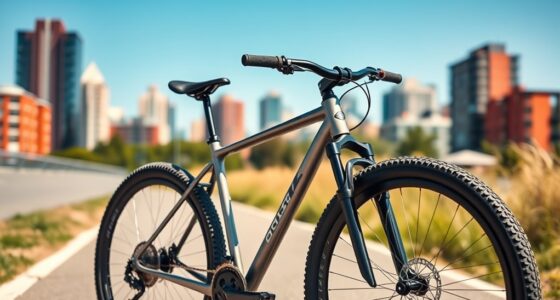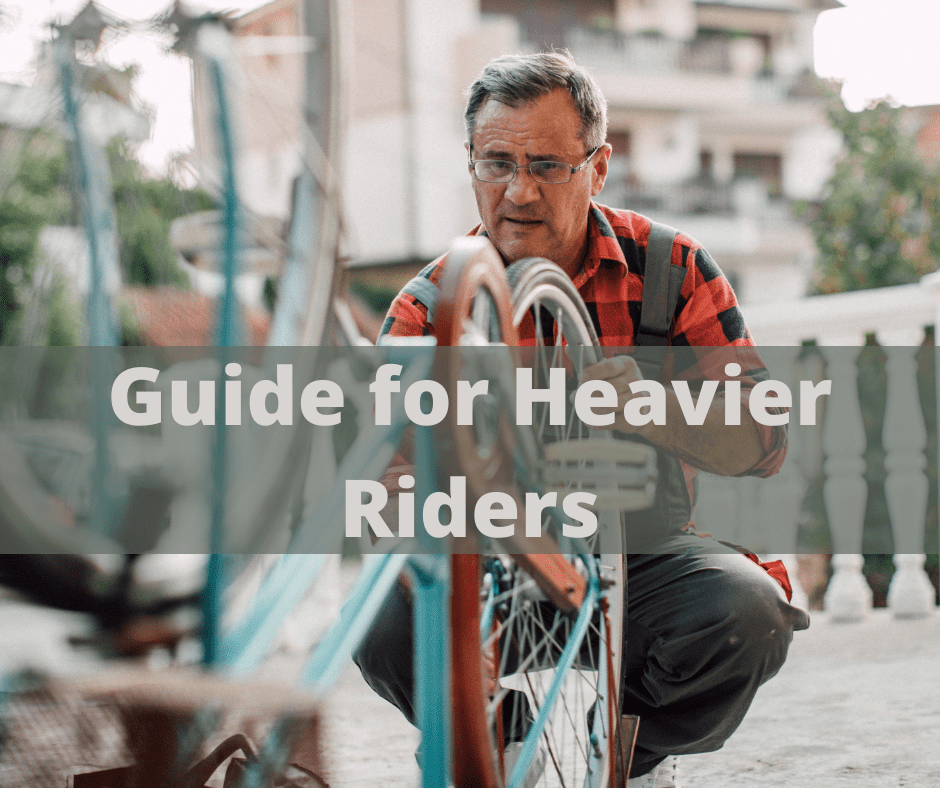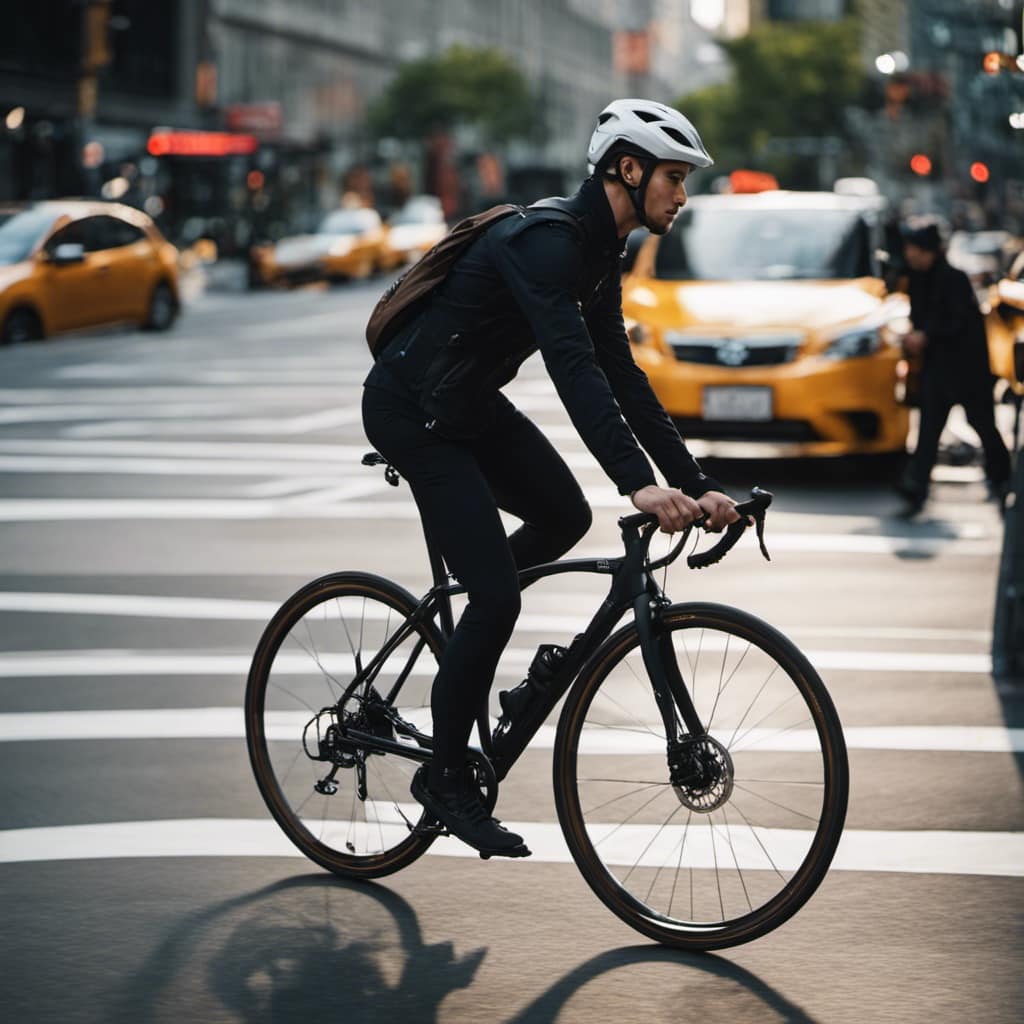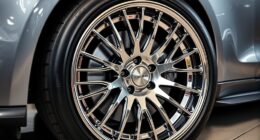Are you tired of feeling exhausted and drained after long-distance travel on your hybrid bike? We’ve got you covered with 7 important tips to build stamina and make your journeys more enjoyable.
From choosing the right gear ratio to incorporating interval training, we’ll share our experienced advice to help you conquer those miles with ease.
So, buckle up, fellow adventurers, and get ready to liberate yourself on the open road!
Key Takeaways
- Choosing the right gear ratio for pedal efficiency and maximizing stamina
- Gradually increasing distance and speed in endurance training
- Incorporating strength training exercises to enhance muscle strength and endurance
- Maintaining a balanced diet and staying hydrated for fuel and nutrients
Choosing the Right Gear Ratio
Let’s start by figuring out how to choose the right gear ratio for our long-distance travel with hybrid bikes. Gear selection plays a crucial role in ensuring pedal efficiency and maximizing our stamina on those long rides. When selecting the gear ratio, we need to consider the terrain we’ll be encountering.

For uphill climbs, a lower gear ratio with smaller chainrings and larger cassettes would be ideal. This allows us to pedal with ease and maintain a steady pace.
On flat or downhill stretches, a higher gear ratio with larger chainrings and smaller cassettes would be more suitable. This enables us to generate more speed without exerting excessive effort.
Gradually Increasing Distance
Our goal is to gradually increase our distance on long rides to build stamina and endurance. One effective way to achieve this is by incorporating increasing speed into our endurance training. By gradually pushing ourselves to ride at a slightly faster pace than our comfort zone, we can challenge our bodies to adapt and improve. It is important to listen to our bodies and not push too hard too quickly, as this can lead to injuries or burnout. A structured training plan can help us gradually increase our distance and speed over time. Here is an example of a 12-week training plan for increasing distance on long rides:
| Week | Distance (miles) |
|---|---|
| 1 | 10 |
| 2 | 12 |
| 3 | 15 |
| 4 | 18 |
| 5 | 20 |
| 6 | 22 |
| 7 | 25 |
| 8 | 28 |
| 9 | 30 |
| 10 | 32 |
| 11 | 35 |
| 12 | 40 |
Incorporating Interval Training
When it comes to building stamina for long-distance travel with hybrid bikes, incorporating interval training can be a game-changer.

Interval training involves alternating between periods of intense effort and periods of rest or lower intensity.
This type of training not only helps improve cardiovascular fitness, but it also enhances endurance and increases overall speed.
Interval Training Benefits
Interval training offers numerous benefits for building stamina in long-distance travel with hybrid bikes. It involves alternating between periods of high intensity and recovery, pushing your cardiovascular system to its limits. By incorporating interval training into your cycling routine, you can improve your endurance and overall fitness level.
One of the main advantages of interval training is that it provides a highly effective cardio workout. The high intensity intervals push your heart rate up, increasing blood flow and oxygen delivery to your muscles. This helps improve your cardiovascular capacity, allowing you to ride longer distances without getting fatigued.

Interval training also helps boost your metabolism and burn more calories. The intense bursts of effort during the high intensity intervals stimulate your body to burn more energy, even after you’ve finished your workout. This can be especially beneficial for those looking to lose weight or maintain a healthy body composition.
Additionally, interval training can enhance your mental toughness and focus. The challenging nature of the workouts forces you to push through discomfort and fatigue, building mental resilience that can be applied to long-distance cycling.
Effective Interval Training Techniques
By incorporating interval training techniques into our hybrid bike rides, we can effectively build stamina and improve our long-distance travel performance. Interval training involves alternating between high-intensity bursts of speed and periods of active recovery. Here are five cycling techniques that can enhance your endurance exercises:
-
Fartlek Training: In this technique, vary your speed and intensity throughout your ride. It simulates real-life riding conditions and helps improve overall stamina.

-
Hill Repeats: Find a challenging hill and sprint up it, then recover on the way down. This builds leg strength and cardiovascular endurance.
-
Tabata Intervals: Alternate between 20 seconds of maximum effort and 10 seconds of rest for a total of four minutes. This high-intensity workout improves anaerobic capacity.
-
Tempo Training: Ride at a comfortably hard pace for an extended period. This helps improve your ability to sustain a steady effort for long distances.
-
Pyramid Intervals: Start with short bursts of high intensity, gradually increasing the duration, then decreasing back down. This trains both speed and endurance.

Incorporating these interval training techniques into our hybrid bike rides will elevate our stamina, preparing us for the subsequent section on strength training for endurance.
Strength Training for Endurance
We recommend incorporating at least three days of strength training into our endurance-building routine for long-distance travel with hybrid bikes. Strength training offers numerous benefits that can greatly improve our overall stamina and performance on the road.
By engaging in regular strength training exercises, we can increase our muscle strength, power, and endurance, which are essential for long-distance biking. Some effective endurance exercises include squats, lunges, deadlifts, and push-ups. These exercises target multiple muscle groups, helping to build strength and stability throughout our body.
Additionally, incorporating resistance training with weights or resistance bands can further challenge our muscles and enhance our endurance capabilities.

Proper Nutrition and Hydration
Let’s make sure to fuel up and hydrate properly during our long-distance travel with hybrid bikes to optimize our stamina and performance. Proper fueling and hydration are essential for maintaining our energy levels and preventing fatigue.
Here are some tips to keep in mind:
-
Stay hydrated: Drink plenty of water before, during, and after your ride. Carry a water bottle with you and take regular sips to stay hydrated.
-
Eat balanced meals: Include a mix of carbohydrates, protein, and healthy fats in your meals to provide sustained energy. Opt for whole foods like fruits, vegetables, lean meats, and whole grains.

-
Snack smart: Pack nutritious snacks like energy bars, nuts, and dried fruits to keep your energy levels up during the ride.
-
Electrolyte replenishment: Replace lost electrolytes by consuming sports drinks or electrolyte tablets to prevent cramping and maintain proper muscle function.
-
Timing is key: Fuel up with a balanced meal or snack 1-2 hours before your ride, and refuel within 30 minutes of completing your ride to aid in muscle recovery.
Rest and Recovery
To optimize our stamina and performance during long-distance travel with hybrid bikes, it’s important to prioritize rest and recovery. Rest and recovery are crucial for maintaining mental focus and preventing fatigue during our journeys.

When embarking on long rides, it’s essential to listen to our bodies and take regular breaks. Adequate sleep is also vital for proper recovery and rejuvenation. This allows our muscles to repair and rebuild, enhancing our overall biking experience.
Additionally, incorporating relaxation techniques such as deep breathing and mindfulness exercises can help calm our minds and improve mental focus.
Mental Preparation and Motivation
When it comes to long-distance travel on hybrid bikes, mental preparation and motivation are key factors for success. Maintaining a positive mindset is crucial, as it helps to overcome challenges and push through fatigue.
Additionally, implementing motivation techniques, such as setting goals, visualizing success, and finding inspiration, can provide the necessary drive to keep going and achieve your desired stamina building results.

Positive Mindset Importance
We always need to maintain a positive mindset to ensure mental preparation and motivation when embarking on long-distance travel with hybrid bikes. A positive mindset is crucial for building mental toughness and overcoming the challenges that come with long rides.
Here are five key aspects of maintaining a positive mindset during your journey:
- Visualization: Envision yourself successfully completing the ride, feeling strong and accomplished.
- Affirmations: Repeat positive statements to yourself, such as ‘I am capable of conquering any distance.’
- Focus on the present: Stay in the moment and focus on each pedal stroke, rather than getting overwhelmed by the distance ahead.
- Embrace the discomfort: Understand that discomfort is temporary and a sign of growth.
- Celebrate milestones: Break the journey into smaller goals and celebrate each accomplishment along the way.
Motivation Techniques for Success
How can we effectively maintain motivation and mental preparation for long-distance travel with hybrid bikes?
When embarking on a challenging journey, it’s crucial to develop self-discipline techniques and goal-setting strategies to keep our motivation levels high.

One effective technique is to set achievable short-term goals along the way. Breaking down the long journey into smaller milestones helps us feel a sense of progress and accomplishment, boosting our motivation.
Another strategy is to visualize success and imagine ourselves crossing the finish line. This mental preparation helps us stay focused and determined throughout the journey.
Additionally, finding a supportive community or training partner can provide the necessary encouragement and accountability.
Remember, building stamina in long-distance travel requires not just physical training but also mental fortitude.

Conclusion
As we conclude our journey on building stamina for long-distance travel with hybrid bikes, we hope you’ve gained valuable insights.
Remember, it’s all about finding the right gear ratio, gradually increasing your distance, and incorporating interval training.
Don’t forget to fuel your body with proper nutrition and hydration, and give yourself ample rest and recovery time.
And most importantly, keep that motivation alive!

So saddle up, embrace the challenge, and let your hybrid bike take you on thrilling adventures.
Happy pedaling!

